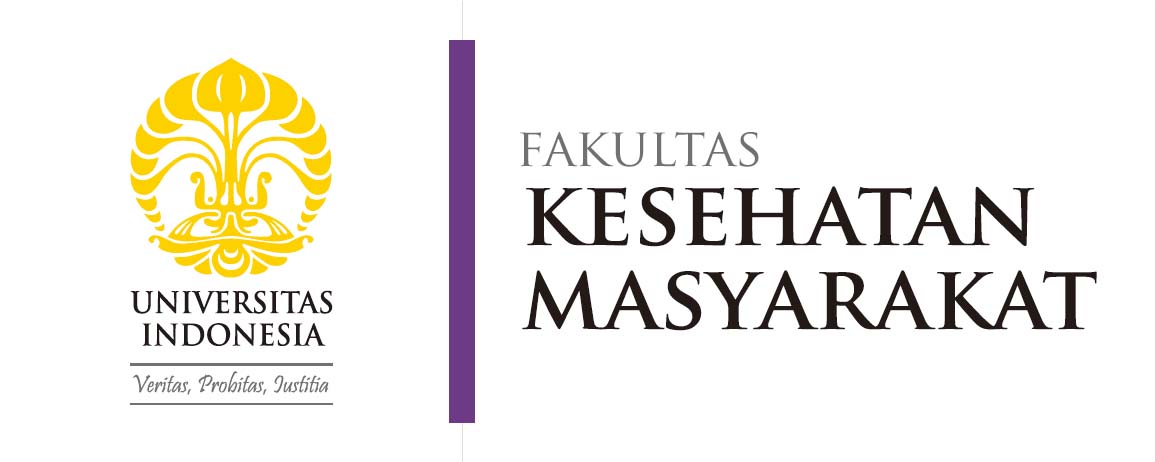The Faculty of Public Health (FPH) at Universitas Indonesia (UI) has once again conferred a doctoral degree in Public Health Sciences through a promotion session held on Saturday, July 5, 2025. The session was conducted in a hybrid format at the Doctoral Promotion Room, Building G, FPH UI, and via Zoom Meeting. On this occasion, Andy Probowo successfully defended his dissertation titled “Cost and Tariff Analysis of Inpatient Ischemic Stroke under the National Health Insurance Scheme: Impact on Hospitals and BPJS Kesehatan.” The session was chaired by Prof. Dr. Amal Chalik Sjaaf, S.K.M., Dr.PH., as Head of the Examination Committee.
Andy highlighted critical issues in health financing, particularly concerning the treatment of ischemic stroke patients under the National Health Insurance (JKN) scheme. Stroke is one of the most catastrophic and high-cost diseases. Data from the Basic Health Research Survey showed that stroke prevalence rose from 7 per 1,000 population in 2013 to 10.9 in 2018. This increase has not only placed a higher burden on health services but also significantly strained BPJS Kesehatan’s finances. Stroke ranked as the third highest disease in JKN claim costs, rising from IDR 1.4 trillion in 2016 to IDR 3.2 trillion in 2022.
INA-CBG (Indonesian Case-Based Groups) tariffs are used in the JKN system to reimburse health services at advanced referral health facilities (FKRTL). Andy’s research was motivated by the mismatch between INA-CBG tariffs, which still refer to 2016 regulations, and actual treatment costs that have evolved, especially after the release of the 2019 National Clinical Practice Guidelines (PNPK) for stroke. This discrepancy potentially causes financial deficits for hospitals, especially public hospitals such as the National Brain Center Hospital (RS PON), which served as the case study site. The research aimed to calculate the unit cost of inpatient ischemic stroke treatment for JKN patients at RS PON, identify the determinants of cost variability, and assess the appropriateness of INA-CBG tariffs compared to actual hospital costs.
Using a retrospective design on 96 ischemic stroke inpatients from October to December 2019, Andy found that the average treatment cost per patient was IDR 11,598,286, with a standard deviation of IDR 5,799,088. Costs were significantly influenced by various factors such as length of stay, systolic blood pressure, and the National Institutes of Health Stroke Scale (NIHSS) score at hospital admission. On the tariff side, it was found that the INA-CBG system resulted in an average deficit of IDR 214,049 per patient. When extrapolated to annual figures, RS PON experienced a potential deficit of IDR 1.26 billion, while BPJS Kesehatan benefitted from a surplus due to paying less than the actual hospital costs.
“Another key finding shows that medical interventions heavily determine the cost of care. Patients receiving thrombolysis therapy incurred an average cost of IDR 23,383,891, significantly higher than those without such treatment,” explained the Promovendus. The largest cost components were inpatient rooms, radiology, and laboratory services, collectively accounting for 67.2% of total costs. High variation in radiology costs stemmed from advanced procedures such as MRI and contrast imaging, particularly for patients with severe stroke.
Multiple regression analysis identified length of stay, systolic blood pressure, and NIHSS score as significant determinants of unit cost variation. Path analysis further revealed that stroke severity was the main factor influencing patient length of stay. The mismatch between INA-CBG tariffs and actual costs compelled hospitals to apply cross-subsidies—covering deficits in some patients with surpluses from others. “However, this scheme is unsustainable and risks undermining the hospital’s operational stability in the long term,” he added.
Based on these findings, Andy proposed several strategic recommendations. Hospitals need to shorten emergency response times to reduce stroke severity and hospital stays. Controlling hypertension, a major stroke risk factor, also requires cross-sectoral attention. The Ministry of Health is urged to review the structure of INA-CBG tariffs to align them with actual unit costs and to strengthen PNPK implementation as a clinical standard. “Moreover, BPJS Kesehatan and the Ministry of Health should empower RS PON as a mentoring hospital for other institutions and consider including post-hospital rehabilitation in the benefit package, recognizing the importance of long-term recovery for stroke patients,” Andy emphasized.
Throughout his dissertation process, Andy Probowo was mentored by a supervisory team consisting of Prof. Dr. Ascobat Gani, M.P.H., Dr.PH as Promoter, and Prof. Dr. Mardiati Nadjib, M.S. as Co-promoter. The examination committee included Prof. Dr. Erna Kristin, Apt., M.Si.; Prof. Dr. Meiwita P. Budiharsana, M.P.A., Ph.D.; Dr. Mahlil Ruby, M.Kes.; and Dr. Mursyid Bustami, Sp.S(K), KIC, M.A.R.S. Andy successfully defended his dissertation and was awarded a Doctorate in Public Health with a “High Distinction” (Yudisium Sangat Memuaskan) and a GPA of 3.81.
Andy Probowo’s achievement adds to the growing list of health policy and financing scholars produced by FPH UI. His dissertation findings are expected to serve as a vital reference for JKN financing reform and promote more equitable and sustainable tariff policies for all stakeholders, including hospitals, BPJS Kesehatan, and the public. (DFD)

